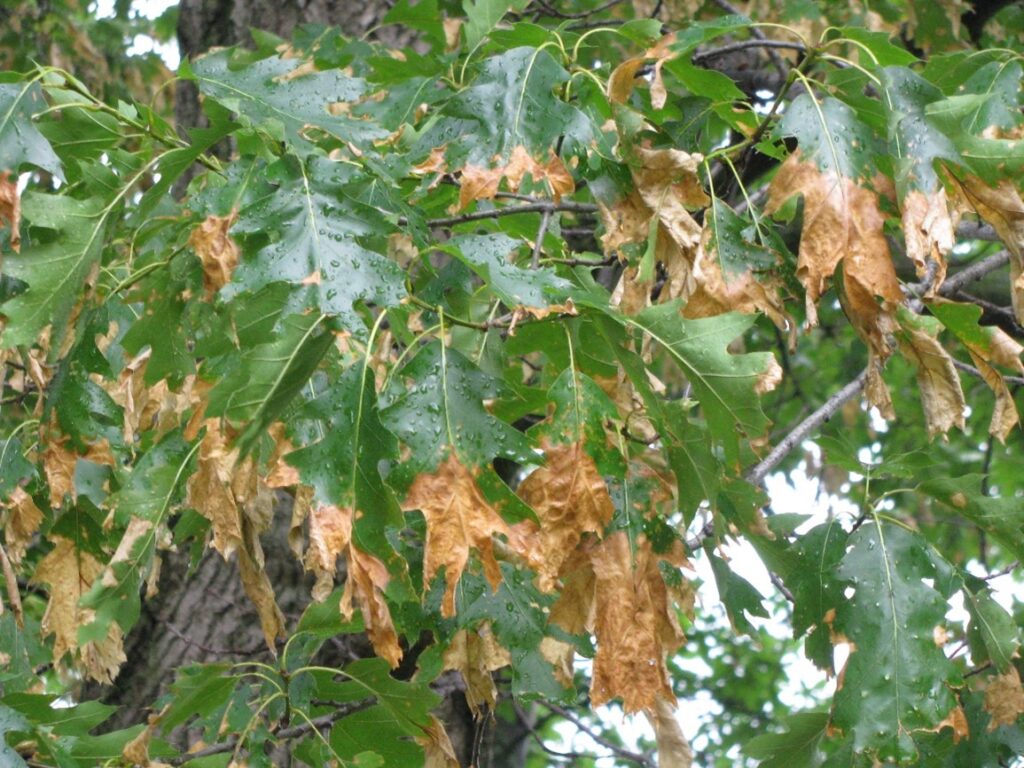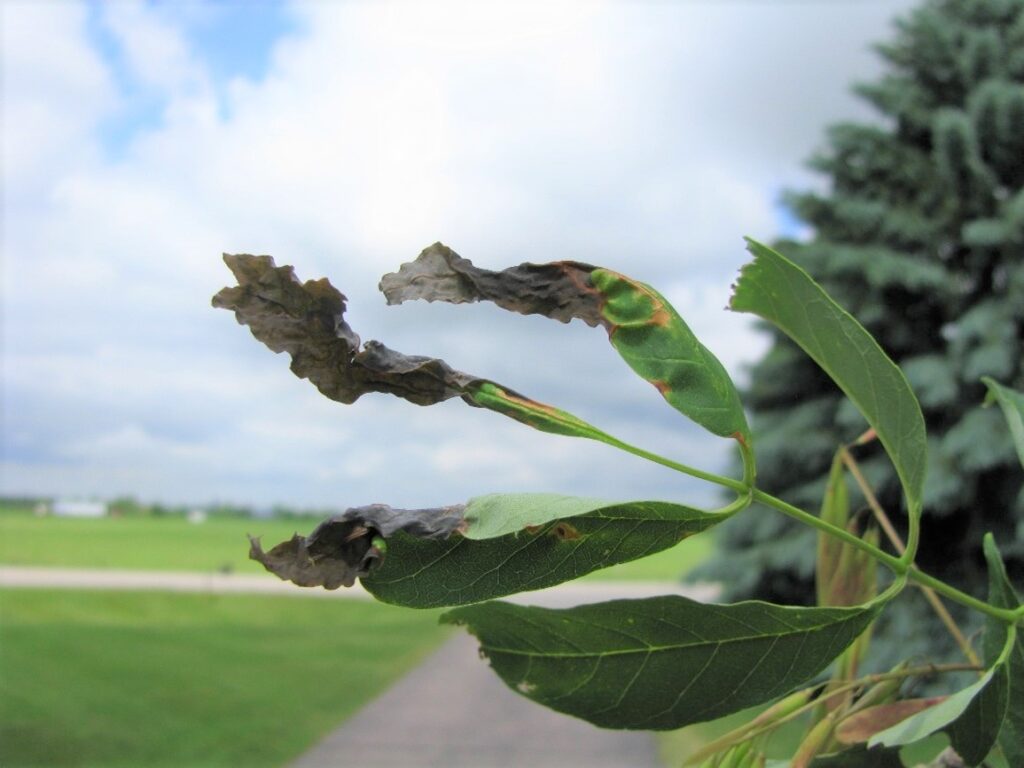By Michael Hillstrom, DNR Forest Health Specialist; Michael.Hillstrom@wisconsin.gov
and Abby Krause, DNR Urban Forestry Coordinator; Abigail.Krause@wisconsin.gov

Oak leaves infected with anthracnose.
Anthracnose is a common disease of hardwood trees during cool, wet spring seasons. Some parts of Wisconsin have been cooler and wetter than others this spring, so anthracnose damage may be patchy.
Ash, maple, white oak, sycamore and walnut are the most commonly impacted tree species. Each species has its own species of anthracnose that infects it, but if weather conditions are right, then we tend to see damage on multiple species.
Symptoms of anthracnose appear as patches of brown, dead leaf tissue, which may cause leaves to curl or shrivel up. Trees may drop the infected leaves.

Ash leaves infected with anthracnose.
Anthracnose damage is cosmetic for most trees, so typically no action is needed. No management is recommended in traditional forests. For urban trees, rake up and dispose of infected leaves to reduce the spore load next spring. Only after several, consecutive years of severe defoliation does anthracnose pose a health threat to otherwise healthy trees.
Be aware that frost damage looks similar to anthracnose and may also cause impacted leaves to drop.
See below for more resources about anthracnose and how to identify it.
- Anthracnose – University of Wisconsin Extension
- Anthracnose of Shade Trees – University of Minnesota Extension
